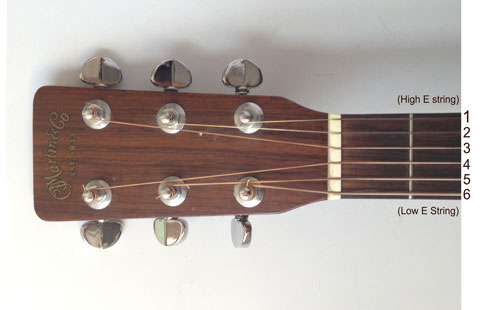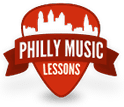
Reading Guitar Tablature
Tablature is a system of reading guitar music which is based on fret numbers as opposed to symbols on a staff. As guitarists we have two options when it comes to reading music. One is standard notation, which is essential for translating music to anyone who’s not a guitar or bass player, and the other is tablature. There are many people who will disagree with me on this, but I feel that learning how to read tablature and rhythms is enough to get by for the casual guitarist. However, if you want to begin to learn music theory, get into the realms of jazz or classical music or pursue music as a career, then it is essential that you learn how to read standard notation.
Introducing standard notation too early on can be a little boring for guitarists excited to start playing the music that they love, so I almost always start with teaching tablature (unless the music that they love happens to be jazz or classical). Once you’re able to read tablature there are endless resources available to you on the internet and in transcription books to keep you busy for a long, long time. The good news is that tablature is an incredibly simple system for translating guitar music. Once you get the basics of reading tabs, you should find a teacher or a book that explains reading rhythms. This is really important in comprehending more complex solo passages or strumming patterns, and is often overlooked by guitarists.
This is what a line of blank tablature looks like:
TAB is the abbreviation for tablature. Each horizontal line represents a string on the guitar. You can imagine it as a diagram of the guitar from the view of you looking down at it from above while holding it in the normal playing position.
The lowest line correlates to the lowest string (6), and the highest line to the highest string (1).
Numbers are then placed on the lines to indicate what fret should be played. Here’s a simple example:
So in this case you’re playing all on the 1st string (high E). The music is read from left to right, indicating the passage of time. Play the 4th fret, then the 2nd fret, and then open and so on…
Try playing this familiar riff on the 5th and 6th strings:
“Smoke on the Water”
As you move down to the lower strings it gets a little harder to play because your hand has to stretch further across the neck. Don’t worry, this gets easier and easier with time.
Now try the E minor pentatonic scale. Just two notes per string, and you’ll recognize the sound of this scale immediately as that of rock and blues:
E minor Pentatonic Scale (ascending)
When playing scales, don’t forget to come back down!
E minor Pentatonic Scale (descending)
Once you get the hang of this try looking up some tabs online and give it a go. Tablature is a great way to start playing some recognizable guitar riffs right away!

